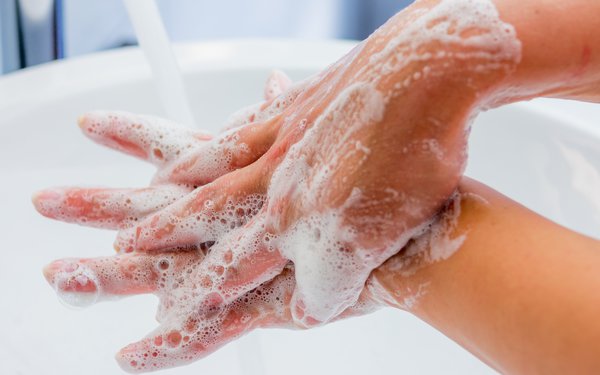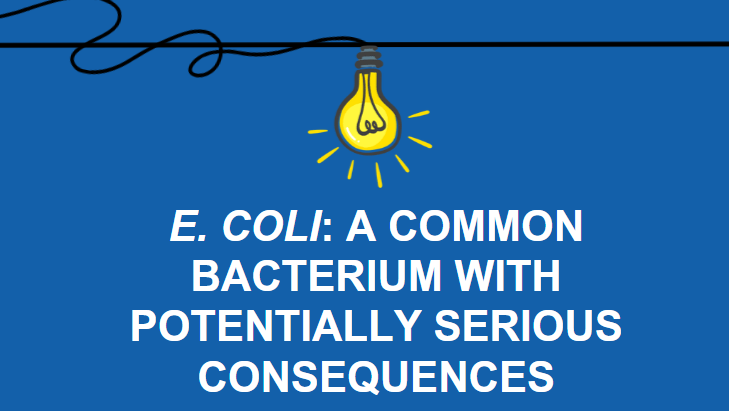Warning from experts suggests that new cases of the deadly disease, long gone from most of the world, are just on its way back recently. Hand hygiene plays an important role to lower the risk of infection. Let’s see what Professor Katie Laird and her team from De Montfort University say.
Authors: Caroline Cayrou, Sapphire Crosby, Sarah Younie and Katie Laird
Poliomyelitis is a highly infectious disease caused by a single strand RNA virus named poliovirus and first discovered in 1908 by Karl Landsteiner. Even though, the first poliomyelitis epidemics emerged in the late 19th century, the virus was probably circulating in the human population for a long time. Indeed, potential traces of deformities due to paralytic poliomyelitis are observed in ancient Egyptian mummies, paintings and carvings. Children under 5 years old are the main population at risk of infection but anyone not vaccinated can contract the disease and spread it. Even though poliomyelitis is associated with crippling deformities, 70% of the infection are asymptomatic and 25 % exhibit mild symptoms. The virus normally multiple in the intestine, but can invade the nervous system and then cause meningitis (1-5% infection) or paralytic poliomyelitis (0.5% to 0.5‰ of the infection) with a mortality rate of 5-15% among paralysis cases.
Before the development of vaccines almost all children were infected by polioviruses. The first vaccine developed by Jonas Salk based on an inactivated poliovirus started to be distributed from 1955. A second vaccine developed by Albert Sabin was approved around 1963. This second vaccine as it was based on a live attenuated virus could be given as oral drops and became the predominant vaccine used. The introduction of both vaccines allowed a thousand-fold reduction of the poliomyelitis incidence in USA and similar trends were observed in other countries. Later, global campaigns of vaccination allowed to almost eradicate the poliovirus. Today, endemic wild poliovirus is only present in Afghanistan and in Pakistan. However, the vaccination coverage in several countries remains too low and the emergence of poliomyelitis outbreaks due to circulating vaccine-derived viruses can be observed. Indeed, the lack of herd immunity allows the live attenuated polioviruses from the vaccine to circulate and multiple among non-vaccinated individuals. It resulted in the apparition of mutations in the attenuated poliovirus genome and the recovery of its virulence.
Humans being the only reservoir of the disease, the virus is only transmitted person to person. The most frequent routes of transmission observed are faecal-oral route by contamination with faeces of the hands, the surfaces, the food and the water and oral-oral route through droplets and aerosols produced by infected individuals. Improper sanitation facilities and lack of personal hygiene have been identified as important factors of transmission. And as observed for other faecal-oral and oral-oral routes pathogens (rotavirus and Covid for instance), a good hand hygiene is essential to avoid transmission. Thus, it is recommended to regularly wash hands with soap and water or using products effective against poliovirus. It is important to note that some standard alcohol-based hand sanitisers do not kill poliovirus efficiently.
This year, outbreaks of poliomyelitis have been occurring in various countries (USA and Israel for instance) highlighting a potential come back of poliomyelitis. In the United Kingdom even though no poliomyelitis cases were observed, circulation of vaccine-derived poliovirus in London has been confirmed by the detection of polioviruses in sewage. The presence of the virus in London raises concerns and the NHS decided to offer a booster dose of polio vaccine to all children aged 1 to 9 years old in the city. However, vaccination can’t fully stop transmission and alternative methods should be used to limit the circulation of poliovirus.
Correct hand-hygiene practice is a critical factor in limiting the transmission of viruses such as poliovirus, yet many children (and adults) do not adequately wash their hands. Interdisciplinary research between psychology, health sciences and education at De Montfort University has resulted in the co-creation of A Germ’s Journey (www.germsjourney.com), a resource-based handwashing education intervention comprising of books, web games, videos and posters. The resources are utilised globally across Africa, Asia and Europe, with 6,000 books having been donated to schools, museum exhibits, community centres and refugee camps. Reaching 200,000 people thus far, A Germ’s Journey has led to improvements in handwashing behaviour in children, enhanced knowledge of microorganism transfer in children, and reduced diarrhoea and vomiting associated with poor hygiene.
A psychology evaluation study within Thinktank Birmingham Science Museum demonstrated improved handwashing behaviour following the GJ intervention. After watching a handwashing video-song at Thinktank, children engaged in washing significantly more areas of their hands than those who did not see the video, with 53% of participants washing in between fingers in the intervention group, compared to 25% in the control group. In addition, a randomised controlled trial conducted in schools, with Early Years Foundation Stage (EYFS) children in UK between December 2019 and March 2020, further demonstrated that the intervention was effective in instigating positive long-term behavioural changes in young children’s handwashing quality, with children contacting significantly more areas of their hands during a handwashing observation immediately after the intervention compared to baseline measures. Importantly, this new skill acquisition was largely retained following a one-month delay.
Evaluative studies also demonstrated improvements in young children’s understanding of microorganism transfer and the relationship between microorganisms and illness in India and the UK. Alongside NGOs, the Germ’s Journey research team ran workshops using a newly developed Gujarati book with children and trained teachers in the Gujarat State (India), in areas of severe socio-economic deprivation and very limited access to education. Following the Germ’s Journey workshop, 55% of children who completed baseline and identical post-workshop assessment displayed an increased understanding, demonstrating that using the resources had a significant influence on the children’s understanding. In response to COVID-19, new resources were developed in order to aid children’s understanding of respiratory illness and infection prevention in a fun and engaging way. Workshops utilising interactive activities were conducted with school children aged 5-6. Data gathered from these newly-developed workshop showed an increase in children’s understanding both directly after the workshops and a month afterwards. Children were asked questions such as: ‘How do germs make us poorly?’ with 28.15% of children answering correctly before the workshop, increasing to 53.16% directly after the workshop, with 39.77% retaining this information a month after. When asked ‘How do we get rid of germs?, 69.63% of children answered correctly beforehand, increasing to 89.96% directly after the workshop and increasing further to 93.05% a month after. When asked ‘Where do germs live?’ 57.04 % of children answered correctly before, increasing to 88.85% directly after and 87.69% a month after.
Alongside interactive workshop activities, A Germ’s Journey has worked alongside PAL International in order to develop educational handwashing resources and hand-hygiene products. The resources, A Germ’s Journey Soaper Stars, centre on a group of superhero type characters and contain hand gel, hand wipes etc and specifically developed educational resources with games and puzzles. These resources are currently being used as part of an educational intervention with NHS Hospital Trust’s paediatric patients to evaluate their effectiveness in aiding handwashing understanding and practice.
Initiating and encouraging correct hand-hygiene practices with children from a young age is crucial in order to stop the transmission of infectious diseases and viruses. Telling children they need to wash their hands is not enough. In order for children to incorporate sustained, correct hand-hygiene practices, they must be taught how to and why it is so important. It is only by taking such measures, and ensuring that children are fully vaccinated; we can limit the prevalence of childhood illnesses such as poliovirus.
References:
CDC website: https://www.cdc.gov/polio/what-is-polio/index.htm
WHO website: https://www.who.int/news-room/fact-sheets/detail/poliomyelitis
ECDC website: https://www.ecdc.europa.eu/en/poliomyelitis/facts
NHS website: https://www.gov.uk/government/news/all-children-aged-1-to-9-in-london-to-be-offered-a-dose-of-polio-vaccine
Mehndiratta MM, Mehndiratta P, Pande R. Poliomyelitis: historical facts, epidemiology, and current challenges in eradication. Neurohospitalist. 2014 Oct;4(4):223-9. doi: 10.1177/1941874414533352.
Germs Journey Website: www.germsjourney.com
Younie, S., Mitchell, C., Bisson, M-J., Crosby, S., Kukona, A. and Laird, K. (2020) Improving young children’s handwashing behaviour and understanding of germs: The impact of A Germ’s Journey educational resources in schools and public spaces. PLoS ONE, 15 (11): e0242134
Crosby S, Laird K, Younie S. Interactive health-hygiene education for early years: the creation and evaluation of learning resources to improve understanding of handwashing practice. International Journal of Early Years Education. 2019 Jun 16;27(4):374–90.
Crosby S, Laird K, Younie S. Children and handwashing: Developing a resource to promote health and well-being in low and middle income countries. Health Education Journal. 2019 Aug;79(2):123–37.
Crosby, S., Younie, S., Williamson, I., Laird, K. (2020) Evaluating approaches to designing effective Co-Created hand-hygiene interventions for children in India, Sierra Leone and the UK. PLoS ONE 15(9), e0239234.






